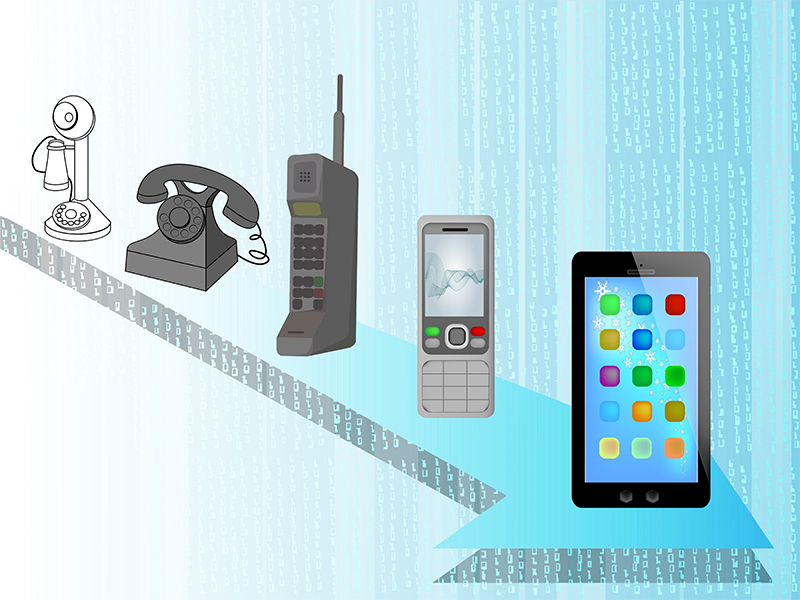Managing the Important as well as the Urgent
I’ve been thinking about technology and its potential impact on our organizations. I’ve been wondering how well we in the IT world have been managing emergent technology. What do I mean by “emergent technology?” I define that as technology that has recently gained attention, but is still taking shape as a solution to a specific problem.
The issue is time and how we choose to manage it. For instance, I’ve just finished co-authoring another cybersecurity working paper for the Technology Affinity Group. It’s filled with lots of ideas, tools and tips for properly managing your cybersecurity posture. As I read the draft for the last time, I thought about how much work this paper suggests IT managers do to adopt that cybersecurity posture. With that I started thinking about how hard it is for IT managers to move beyond what’s urgent and attend to what’s important. Managing emergent technology certainly falls into the “important” bucket. For too many of us, that means we never have time for it.
It’s a cliché at this point to say that the CIO (or whoever heads IT) must be a “business partner.” Yet, that is the case. One of the contributions that IT leaders need to provide to their organizations is guidance on technology. What technology is emerging that could benefit the organization? Which technology will make the organization work more efficiently today? And which technology has the potential to transform the organization? The first requirement in managing emergent technology is knowing what technologies will be important in the coming years.
What Technology was Emergent 10 Years Ago? 5 Years Ago?
Imagine you’re an IT leader in 2009. I checked Techmeme and found these were the hot topics in 2009:
- Office Web Apps
- Palm
- Inuit-Mint
- Windows 7
- Snow Leopard
- HTML 5
- Google Books
Now imagine you’re an IT leader in 2014 (that may not take much effort!) These were the hot topics in 2014, five years ago. Which “hot topic” in 2009 was still on the list five years later?
- iPhone 6
- iOS 8
- Apple HealthKit, HomeKit, iCloud Drive and Pay
- New Google Fiber head
- Airbnb
- Wi-Fi calling
Reading about these technology events and announcements is always interesting with the benefit of hindsight. We were breathless about some things, like iPhone, that continue to dominate today. Other items, such as Office Web Apps, didn’t seem like much at the time. And some items, such as Palm, that seemed big then are now relegated to history.
How Can We Manage Emergent Technology?
So, how can we better manage emergent technology? We’re used to thinking about how we bring technology to the organization that will help today. What we’re not so accustomed to considering is how to convince executives that an emergent technology can completely change the way we operate.
Let’s start with today’s emergent technology. Or not. That’s the first challenge: is this technology simply the next shiny object to capture our attention? Or is it a technology that is now ready to enable entirely new ways of working? Consider this list of (possibly) Next Big Things
- Digital transformation
- Artificial Intelligence
- Big Data
- Internet of Things
- Multi-Cloud
- Blockchain
- Autonomous Vehicles
I’ll stop there. If you’d like to see a longer list, go here. If we’re going to manage emergent technology, we must have a framework for thinking about it. Here’s one that I’ve used over the years.
Start with Your Organization’s Problems
Start with the problems your organization faces. What’s causing pain? You can’t count on technology vendors to focus in on how their solutions resolve your problems. So, you need to understand what your priorities are for making things better now. That’s the first step in managing emergent technology—focus on your problems.
Move Next to Opportunities
You will also want to think about ways in which the organization could change, or perhaps must change. For instance, Foundation program staff are being asked to spend more time in the field. How does that change the productivity tools for these staff? As another example, “impact investing” means making (much) bigger funding bets. This requires more research and more cooperation across organizations addressing a given need. What is it that’s holding back the organization from doing dramatically better?
As an example, we’ve written about the World Food Programme (WFP) and their experiment with blockchain technology. You can read about it here. I can imagine that project started with some questions.
- How do we direct aid most efficiently to those who need it?
- Is there a way to provide funds to people that don’t have bank accounts?
- How do we reduce or eliminate fraud in the process?
Notice that (I’m guessing) WFP didn’t start with “how can we make blockchain work?” WFP started with a problem—how to distribute funds to refugees who had no bank accounts—and determined that blockchain could help them solve that problem.
Likewise, start with your problems or opportunities. Then ask, “will this technology help me here?” That’s how you can manage emergent technology.
Remember that Tomorrow’s Version of a Technology will be Different than Today’s
You could look at any of today’s proposed “emergent technologies” and ask: “what is it?” That’s no accident. See this piece by entrepreneur and technology investor Brad Feld, on Artificial Intelligence. Inevitably, a technology like Artificial Intelligence gets some publicity and more people begin talking about it. As the discussion builds, each new participant defines the technology in slightly different terms. Eventually, no one can be sure that we’re talking about the same thing. If you’re familiar with Gartner’s Hype Cycle you have an idea of what I mean.
The trick in managing emergent technology is to project what that technology could become. If blockchain is primarily about a distributed ledger, what are the applications for that? Does that solution address any problems or opportunities in your organization? It takes some creativity and imagination to think about technology this way, but you can do this with some practice.
Cast a Broad Net
The Zen of managing emergent technology is that you don’t start with technology. Yes, you need to understand the technology. This especially applies to answering the “what is it?” and “what could it become?” questions. Consultants can help you here.
You also need to understand where your organization and your industry are going. If your organization has a strategic plan, that would be an excellent place to start. You can also tap into leaders from organizations that are leading in your field. You can also look at organizations that might be in your field in the future. What are they doing? How are they seeing the industry evolve?
Bring the Discussion Back to the Here and Now
Don’t leave yourself stranded in the future. Once you’ve made a foray into what could be, be sure to come back to where you are now.
- What technology can we adopt now, to benefit the organization soon?
- Is there technology we should watch, to see how it develops and what problems it attempts to solve?
- What changes to the organization should I watch, so I can know whether certain technologies are then more or less valuable to the organization?
As you can see, the questions are not easy to answer. If you want to manage emergent technology well, you must commit the time and mental space needed to think expansively. You need to treat the activity as an ongoing pursuit. If this sounds like a task you’ll never have time to address, do this. Find one hour that you can set aside. Begin asking some of the questions above. Don’t worry about arriving at a conclusion after an hour. Follow up with another hour the following week. You’ll be surprised at the progress you can make!





0 Comments